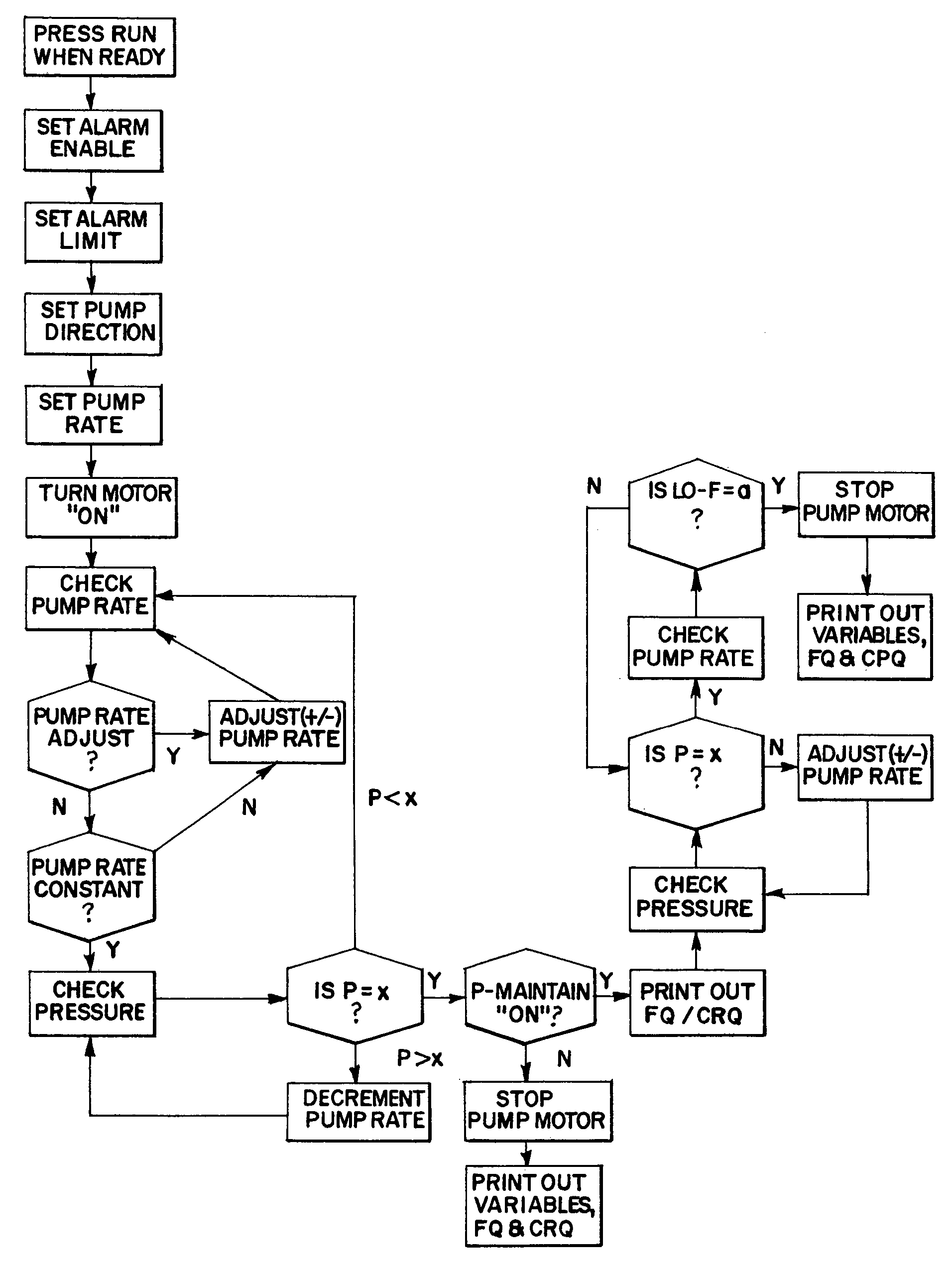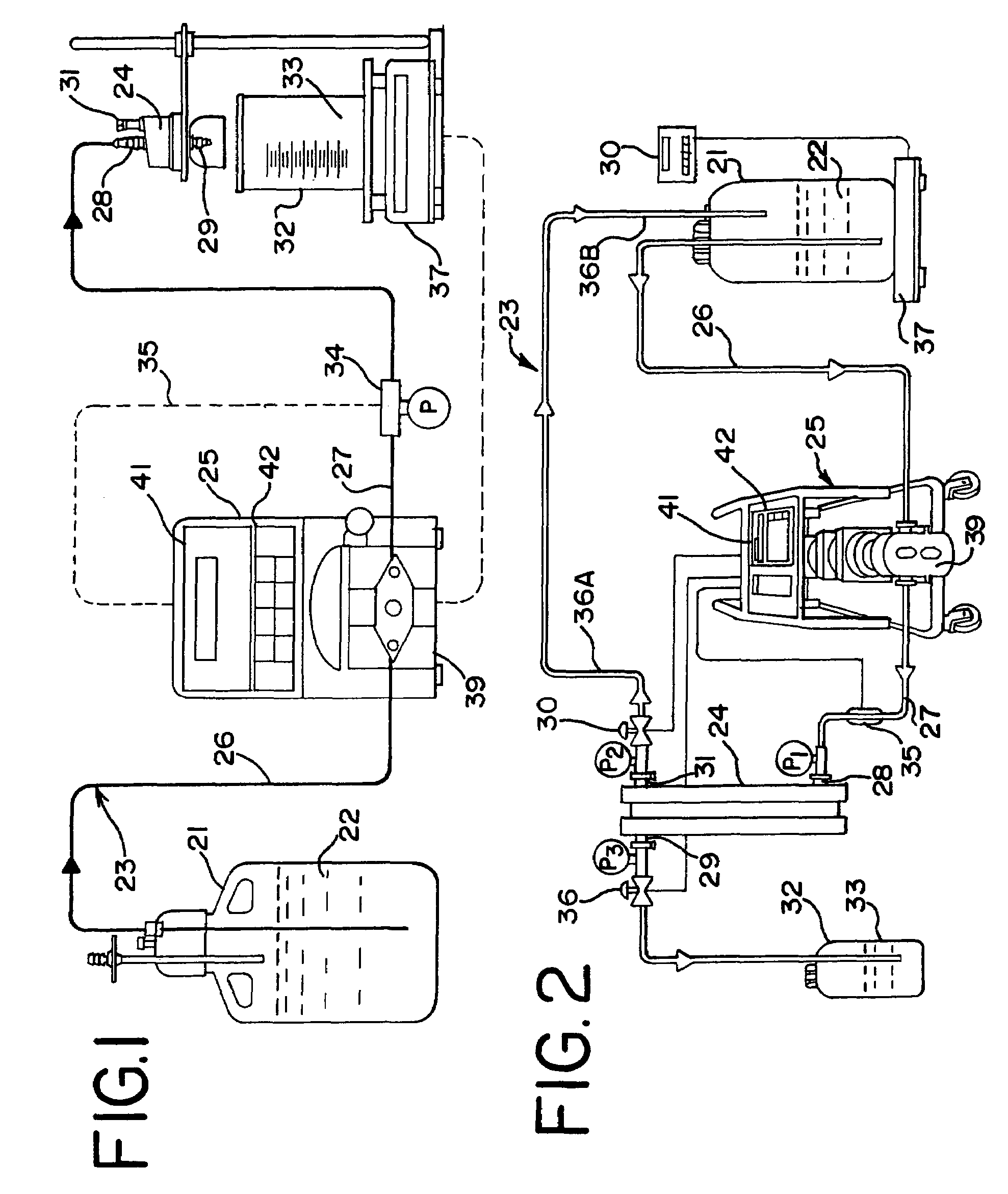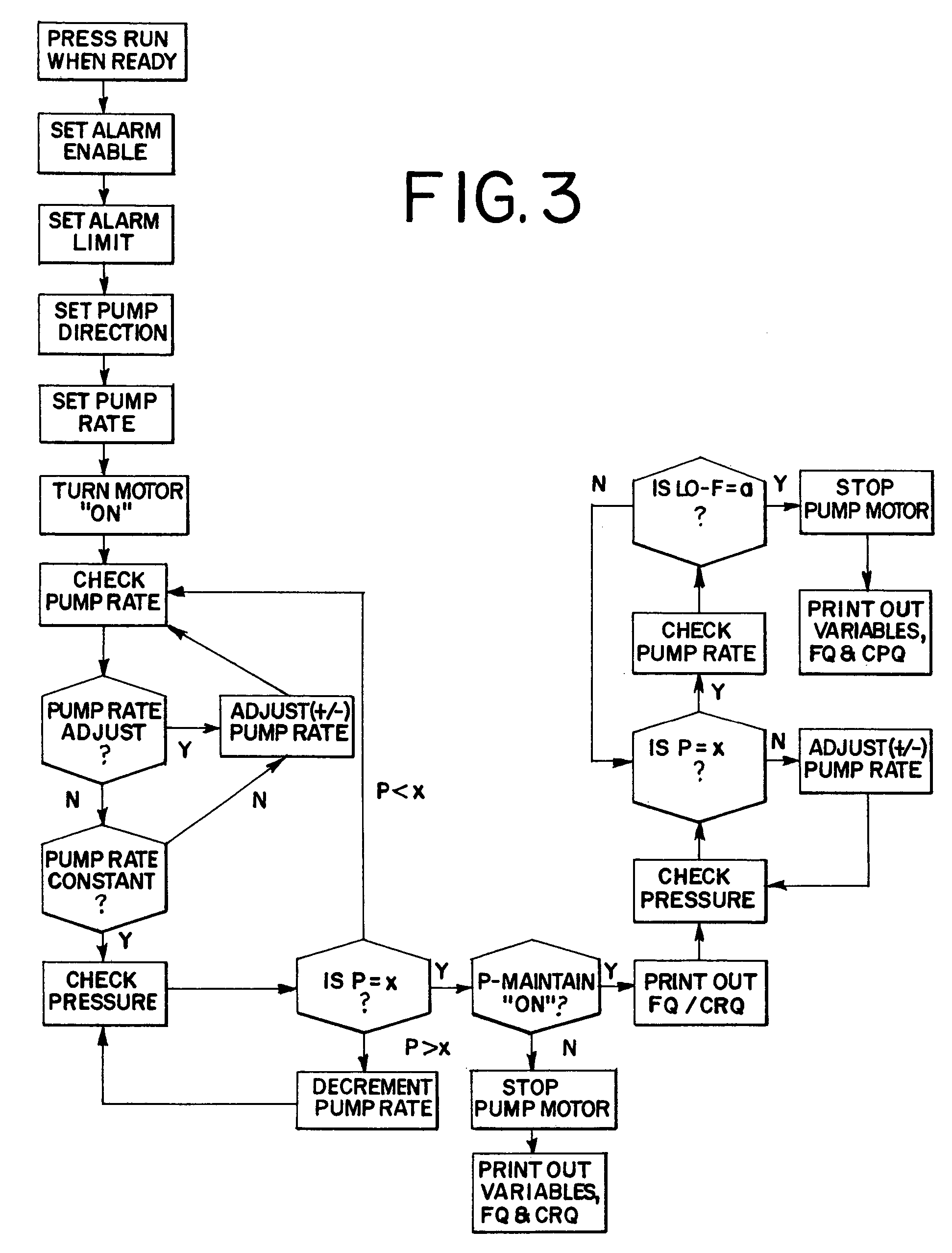Liquid handling for filtration and preparative chromatography
a technology of liquid handling and chromatography, applied in the direction of filtration separation, multi-stage water/sewage treatment, separation process, etc., can solve the problems of clogging of filtration devices, affecting the efficiency of filtration devices, so as to reduce the pressure and enhance efficiency , the effect of minimal operator involvemen
- Summary
- Abstract
- Description
- Claims
- Application Information
AI Technical Summary
Benefits of technology
Problems solved by technology
Method used
Image
Examples
example 1
[0086]In the bioprocessing industry, solutions are filtered by DFF using either constant pressure or constant flow rate. For a given bioprocess solution, the standard procedure for determining (DFF) filter capacity involves the use of pressurized SS containers. The pressurized (20 psi) SS vessel containing the bioprocess solution replaces the pump and reservoir shown in FIG. 1. A fluid line with shutoff valve connects the pressurized vessel with the DFF device to be tested. The test procedure starts with the opening of the manual shut-off valve. The filtrate quantity is measured with an electronic scale; filtration data is collected at regular time intervals.
[0087]The standard test procedure outlined above was used to generate comparative baseline data generally as follows. A 4-liter SS container was filled with 1.0 liter of a surrogate protein solution, consisting of skimmed, fat-free milk (9 grams of protein / liter) diluted 20:1 with water. The SS vessel containing the surrogate pr...
example 2
[0088]Constant rate filtration with a constant pressure condition was carried out on a unit generally in accordance with FIG. 1. A constant pump rate of 15 ml / min was implemented until a backpressure of 20 psi was reached. At this point, the processor-controlled pump unit switched automatically to a constant pressure delivery by modulating the pump output in order to maintain the 20 psi pressure level. An operator-defined low flow alarm setting of 1.0 ml / min was reached, and the unit automatically stopped pumping to complete the processing.
[0089]FIG. 5 provides data from this dead end filtration approach with an MFS cellulose acetate membrane filter having a 0.45 micron porosity and a filter area of 1.73 square centimeters. A dilute milk solution as described in Example 1 was used as the surrogate protein solution. The area under the pump rate versus time curve of FIG. 5 represents the total, collected filtrate rate, which was 136 grams or 7.86 grams per square centimeter of filter ...
example 3
[0092]The procedure of Example 2 was generally followed, but on a larger scale. A 300 square centimeter SARTOBRANTM 300 cellulose acetate membrane filter. This had a porosity of 0.45 microns for the prefilter element, followed by a 0.20 micron final filter. Distilled, deionized water was pumped through this separation unit before processing was begun. Data were generated and are reported in FIG. 6. This filtration proceeded under constant rate and then constant pressure qonditions. The total filtrate weight was 2,206 grams, with the constant rate mode contributing 1,491 grams while the constant pressure mode added 715 grams.
PUM
| Property | Measurement | Unit |
|---|---|---|
| constant pressure | aaaaa | aaaaa |
| constant pressure | aaaaa | aaaaa |
| pressure | aaaaa | aaaaa |
Abstract
Description
Claims
Application Information
 Login to View More
Login to View More - R&D
- Intellectual Property
- Life Sciences
- Materials
- Tech Scout
- Unparalleled Data Quality
- Higher Quality Content
- 60% Fewer Hallucinations
Browse by: Latest US Patents, China's latest patents, Technical Efficacy Thesaurus, Application Domain, Technology Topic, Popular Technical Reports.
© 2025 PatSnap. All rights reserved.Legal|Privacy policy|Modern Slavery Act Transparency Statement|Sitemap|About US| Contact US: help@patsnap.com



